Half circles and "belvedere'.....
"Shaka was seated on a rock and opposite the members of the State Council in a half circle".
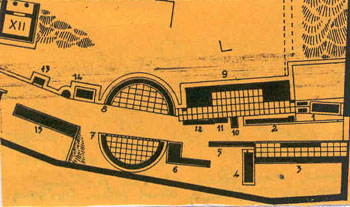
Plan of Delphi (by J. Pouilloux and G. Roux). Detail. To the left and to the right of the sacred way leading to the Temple of Apollo semicircular "recesses" where the statues of "The 7 Kings against Theves" and opposite the statues of their "Epigones" were standing. The semicircular shape indicates perhaps that they held their meetings during deliberations seated in a half circle.
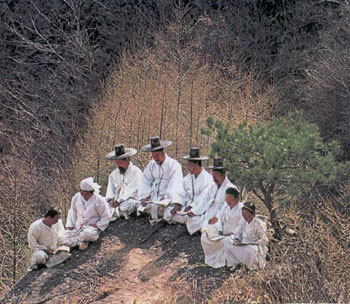
The Korean monks seated in a half circle would hear and see better the standing master (the same idea of the Theater ).
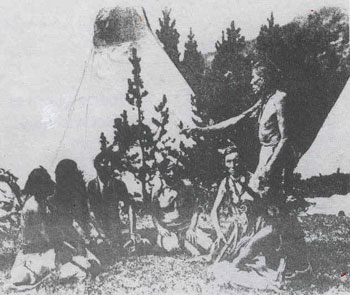
American Indians in a half circle listening to instructions.
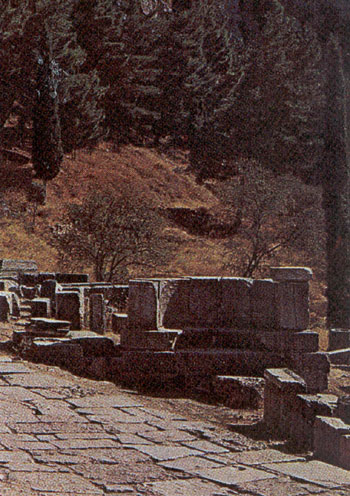
"Belvedere" to the right of the Sacred Road leading to the Temple of Apollo at Delphi. The "belvedere" (bench in a half circle) was very popular with the Romans, a place as its name indicates to sit and enjoy the view. The statues of "The 7 Kings against Theves"and their Epigones were placed to the left and to the right of this Road standing in a half circle because this was probably the way for leaders in a meeting to discuss (like the American Indians) and take decisions.
Respect to God and people.....
by joining both hands for Buddhists, Catholics and Shaka.
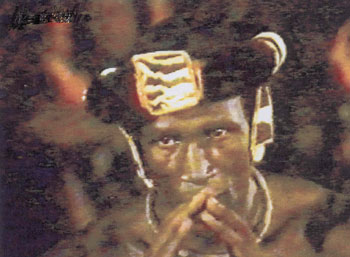
Shaka saluting. The same way were saluting Shaka, his prime Minister and Generals.
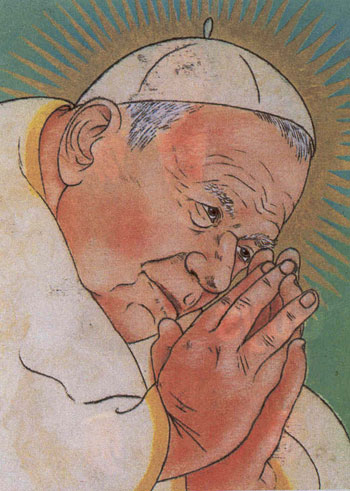
The Pope saluting. The two photos constitute a unique correlation.
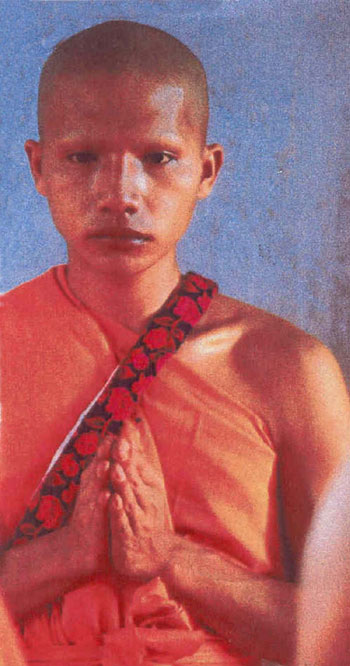
A Buddhist monk in Thailand saluting.
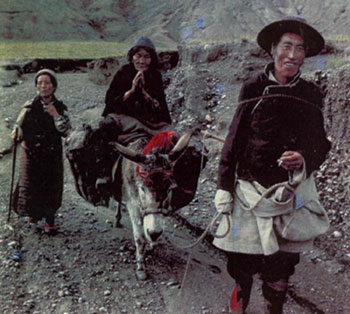
Tibetans on the road.
Carrying water jars and several goods on the head....
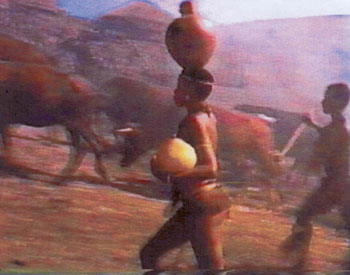
Nandi, Shaka's mother bringing home water from the river.
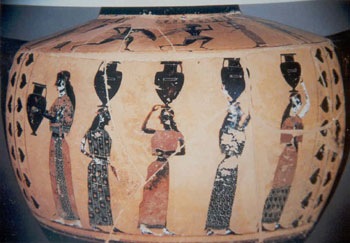
Red-figured vase in Florence.
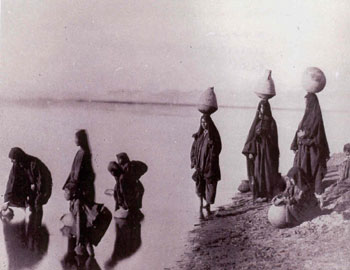
The Nile at Schliemann's time. He asked his friend R.Virhoff in 1888 to take this photo for him (Archives of the Academy of Sciences in East Berlin).
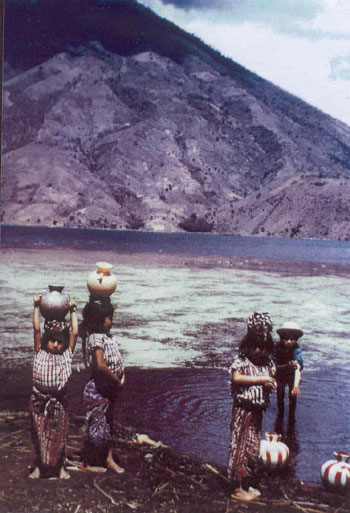
Volcan and lake Atitlan in Guatemala.

Women of Iraq bringing home water
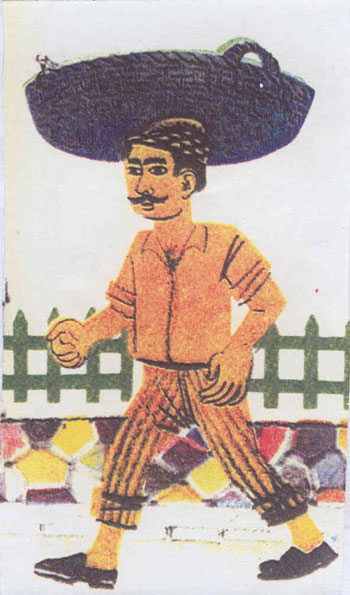
Selling fish on the street in Greece .
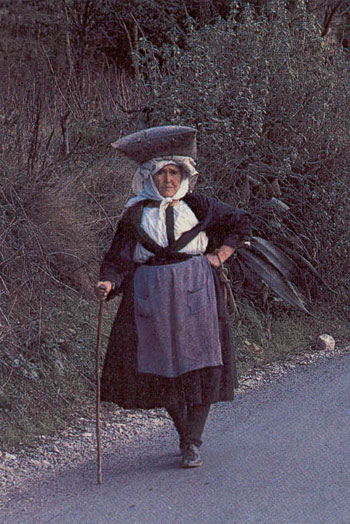
Island of Cephallonia.
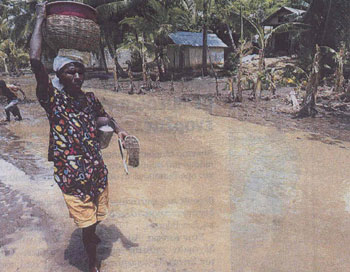
"San Domingo and the last floods in 2004.
Anointing the new King in Israel (Old Testament) and Africa....
Messiah in Hebrew (in Greek Christos) means "the anointed one"."Anointment being a way to show that a Jewish leader had received God's personal help. Kings, Priests and Prophets were anointed ("it is believed that for the King was a customs of the Jews only").Sesame oil was symbolically poured over the head of brides."And Zadok the priest took a horn of oil of the tabenacle and anointed Solomon".1 Kings, ch.1,39. And Jehu the son of Nimshi shalt thou anoint to be king over Israel".1 Kings, ch. 19, 16.
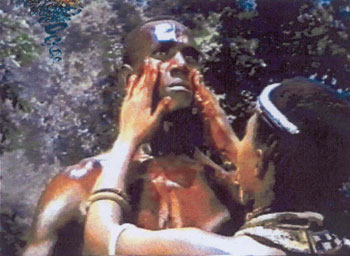
Shaka was carefully anointed with butter before his coronation ceremony.
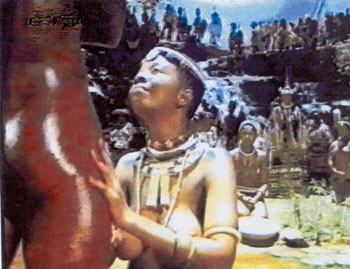
Special vessels for washing hands....
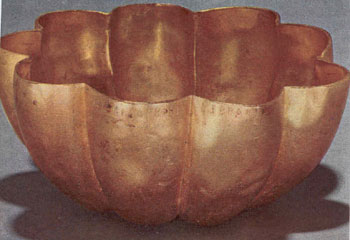
The gold lotus shaped bowl of Kypselos, tyrant of Corinth, about 650 BC. Boston Museum of Fine Arts.
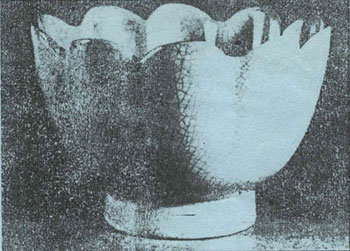
Sung dynasty lotus-shaped bowl in the Palace Museum of Taiwan. In such bowls the Emperor used to wash hands before meals.
In his Zulu-English Dictionary Dr A.T. Bryant says of Zulu pottery: The African pottery of today is often in shape and pattern strongly similar to vessels made in the East, and the simple earthen pots nowadays common in every Zulu kraal are almost identical with those in Egypt at a period 6000 years ago'.
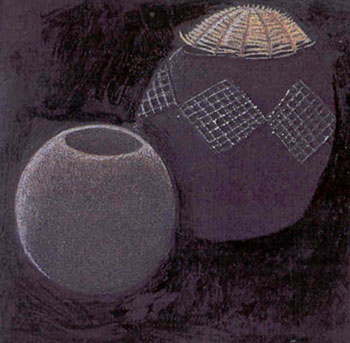
"Hand made clay vessels of the Zulus. Shaka used to wash hands in special earthen vessels. Photo from the book of D.Stanley "Shaka, King of the Zulus"
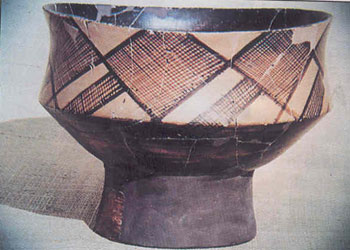
Neolithic clay vessel (painted Urfirnis) in the Frachti cave. About 5,000 BC. Najplion Museum.
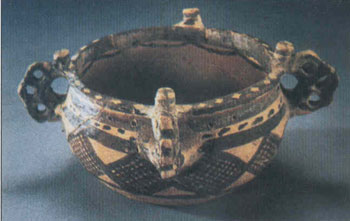
Painted jar in the Museum of Minhe County (Qinghai). 2nd half of the 3rd m, BC. "The belly is decorated with linked lozenge pattern and the interior painted with rhomboid form". The Chinese do not explain what the "lozenge" and "rhomboid" patterns symbolize (the snake).
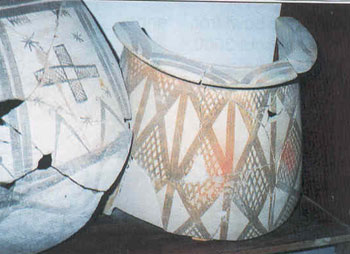
Clay vase from Phylakope. About 2,000 BC. Melos Museum. On the vase to the left a cross.
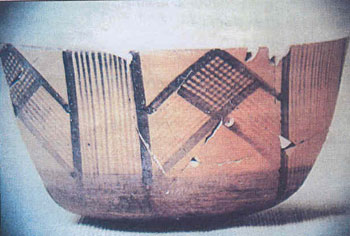
Painted "urfirnis". Middle Neolithic. Argos Museum (from Lerna).
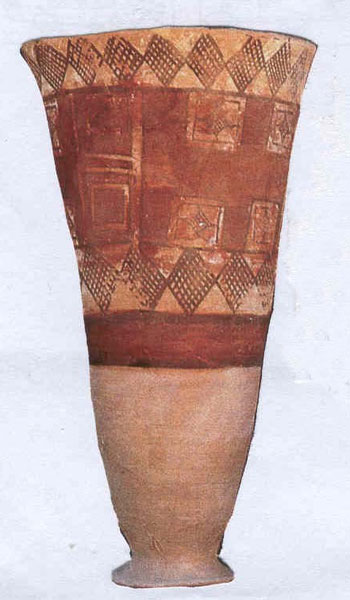
Clay vase from Mehrgarh (Pakistan). About 3,300 BC. In between the "rhomboid" design a cross.
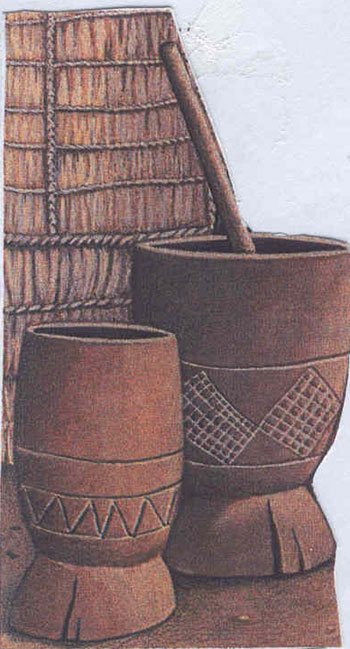
Zulu hand made vessels.
The melting of metals and the spear....
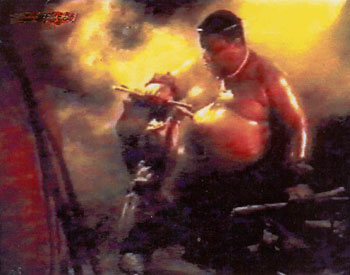
Handicapped people who were lame (like the Greek God Hephaistos, the Chinese God Yi and the Scandinavian God-goldsmith) were the professional goldsmiths who did not need to walk fast.and were seated most of the time.
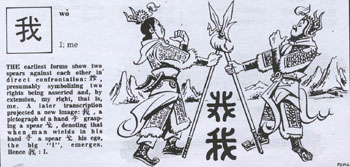
The spear will be made the same from East to West.
Shaka and Zeus and Cronus and spearheads....
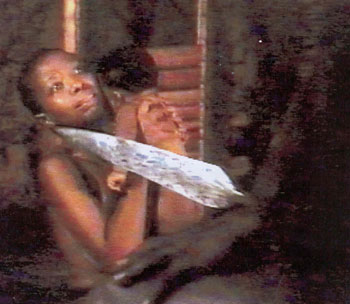
With such a blade according to his own orders was killed the baby-son, of Shaka being afraid that when his son grown up he would kill him to take the throne from him (like Zeus killed Cronus) "like young bulls do to their progenitors".
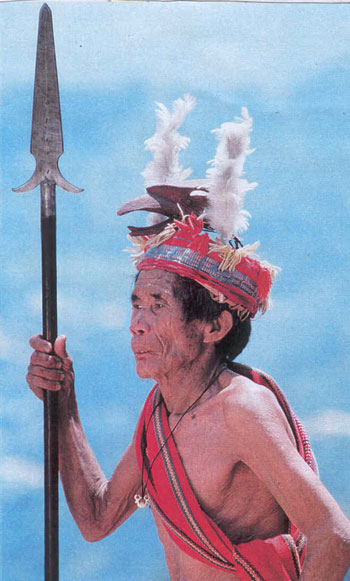
An liugao of Louson island of the Philippines. The same spear, the same "royal" band on the breast (colors and designs very much like the traditional loom work of the island of Myconos). He wears the two feathers like the Pawnee American Indian (''Man and Chief).
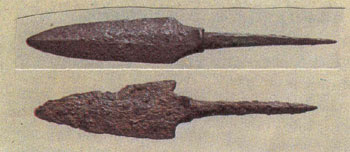
Spearheads from the battlefield of Marathon.
Shields from Greece, China, Egypt and India....
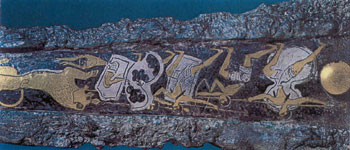
Shields on a dagger from Mycenae (R.Circle A). About 1,500 BC. Athens Archaeological Museum.
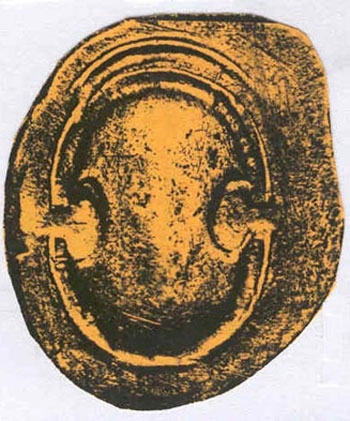
"Beotian" shield on a coin from Theves (stater). 450 BC.

"Oval laminae aureae" from Cretan graves. 1,300 BC. Their use is not explained but they represent, apparently, Beotian shields.
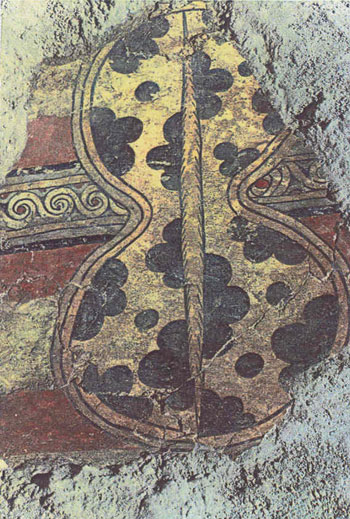
8-shaped shield made, apparently, with ox hide (like all Zulu shields with black or white marks). Wall-painting from Mycenae about 1,300 BC.
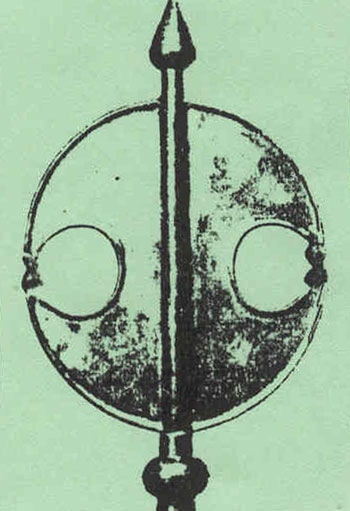
"Emblem carried by devotees of Krishna". West Bengal, 18th c. Brass. Ajit Monkerjee, New Delhi. Apparently a shield and spear.
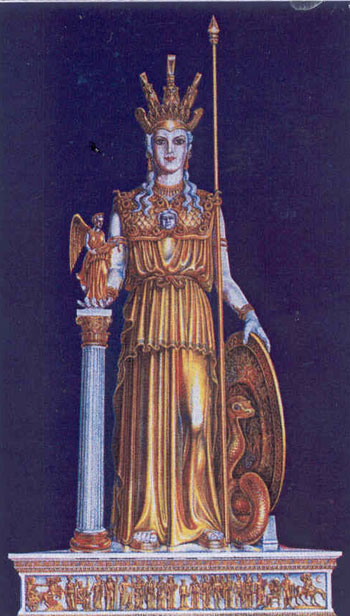
Athena of Pheidias with the same spear.
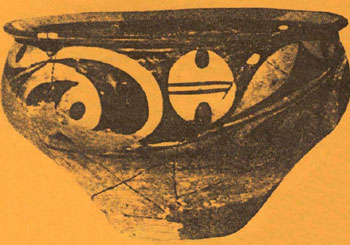
A shield probably on a Neolithic vessel from Honan (Mia-ti-kou culture).
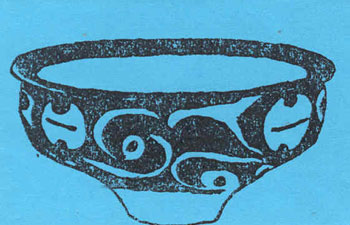
Clay Neolithic vessel with probably painted shields about 4,000 BC (Yangshao culture).
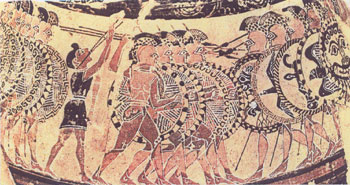
Greek soldiers with round shields. Many of them have symbolic snake decoration.Hydria from Corinth today in Rome. About 650 BC.
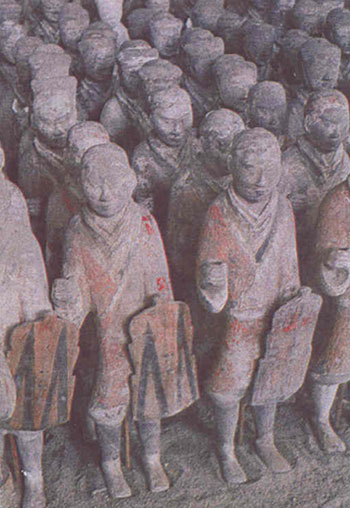
Clay soldiers with shields. W. Han dynasty. Found 30 years ago near Xianyang (Shaanxi).
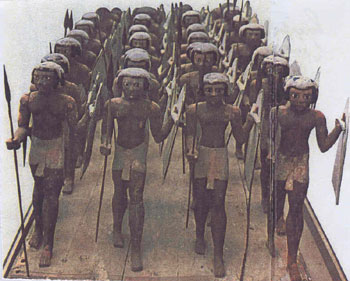
Egyptian wooden soldiers with similar shields. About 2000 BC. Cairo Museum.
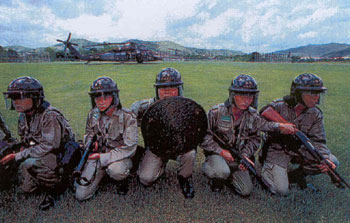
Hong Kong 2000 (photo National Geographic). Police with round shields.
The straw hat of the Chinese and the origin of the round shield....

Straw hat at Guizhou.
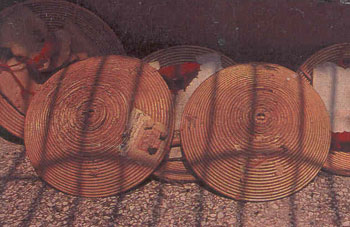
Straw shields of Taiwan (obverse side).
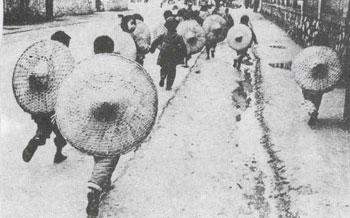
Children of Kouei-lin. Photo LAROUSSE "La Chine'.'
In China the children were given a straw hat for protection from the sun which they hang on their back and they were supposed to keep for their whole life. It was made of hard straw and could also offer protection during fighting and Kungfu drills used as a shield. It usually has a margin on the obverse and reverse side which can be seen on Greek shields and on those of the Knights of the Parthenon frieze.
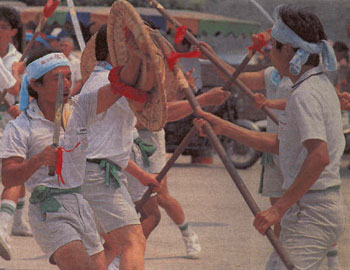
In Taiwan before Temple festivals the Sung Chiang Troupe of warriors come together for drills. "The heroes dance a defensive dance" holding straw shields. A worship is held before drills begin and during the performance females are not allowed to come close (which probably shows that originally the dancers were naked). Photo SINORAMA, May 1992.
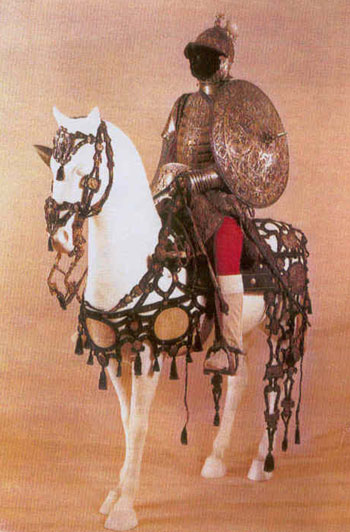
A mediaeval Knight in Vienna (Kunsthistorisches Museum).
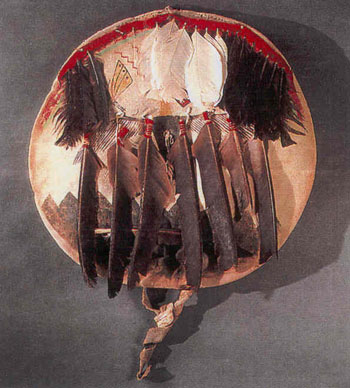
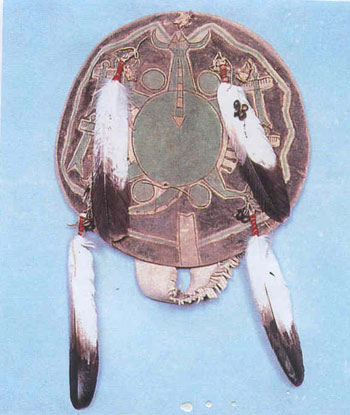
American Indian round shields of the Northern Plains Painted buffalo hide decorated with feathers. N.York N. Museum of the American Indian.
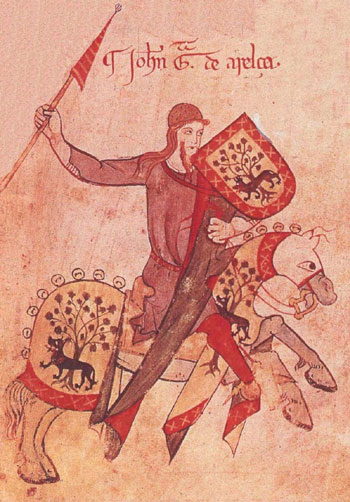
Detail of an illustrated manuscript. A Knight fighting for the liberation of Jerusalem. Photo Time-Life Books (History of the World by J. M. Roberts v. 5).
The Zulu oval shape shield made of ox hide and its symbolic snake decoration.....
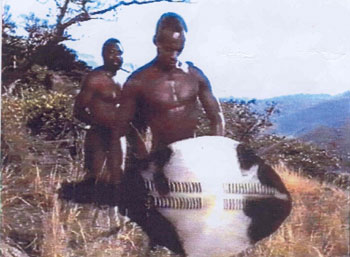
Shaka at 16 with his first shield.
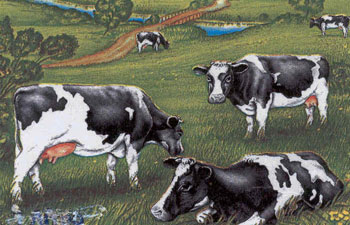
Ox and cow hide was used to make Zulu and Greek shields.
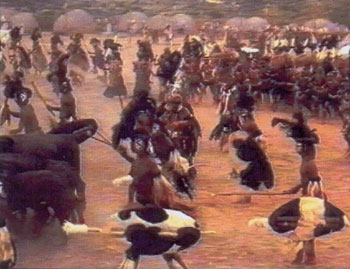
No evidence of round shield for the Zulu.
The snake on the handles of vessels for protection of the drinking water.....
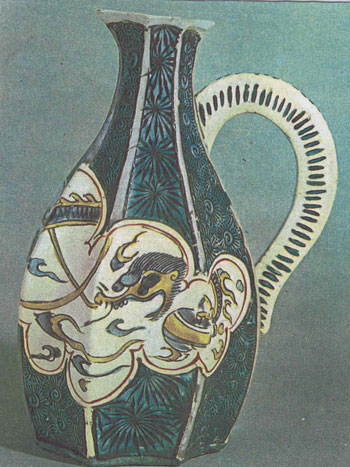
Porcelain vessel with dragon from Japan. About 1,800.London Victoria and Albert Museum. The dragon was to guard fountains and vessels for drinking water from the rats and the cholera. Dragons and snakes were illustrated on the body and the handle of vessels (see also Theresa Mitsopoulou "The dragon-snake in East and West", p. 71). The decoration of the handle is typical for symbolizing the snake and will decorate shields of the Zulus and the Greeks (against Evil, so that they will not be killed in the battle).
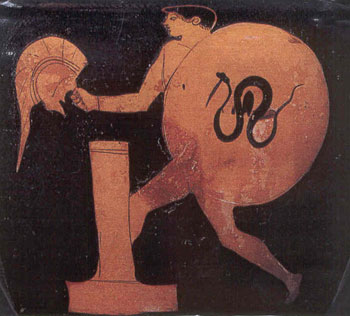
Detail of an early 5th c.BC clay krater. Palermo, A.Safinas Reg.Arch.Museum. "The device of the shield is a large snake".
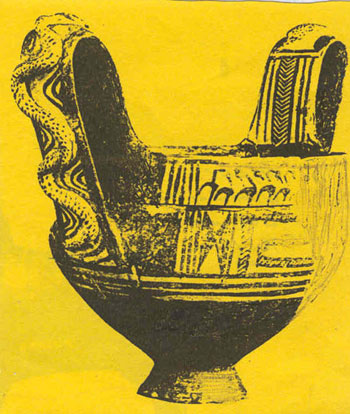
Clay drinking cup about 750 BQ Turkey Bodrum Museum.
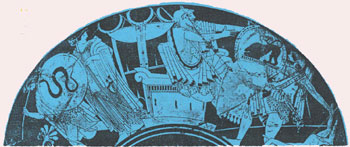
Inner decoration of a kylix about 450 BC in the Louvre. A snake on the left shield.
Slaves carrying the heavy shield. The shield-toy for the dance and for the bride......
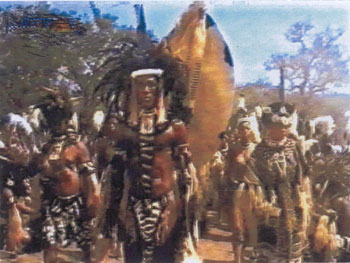
A young boy carries behind Shaka his huge heavy shield. The Athenians and the Spartans also had a slave to carry the shield to the battle field.
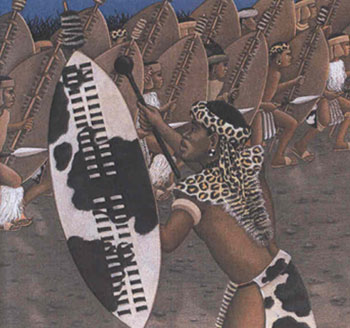
Zulu shield made with ox hide and decorated with symbolic snake design. Photo from the book SHAKA of Diane Stanley. N.York 1988.
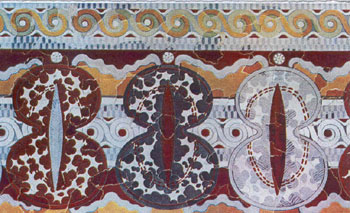
Wall-painting from Tiryns (about 1,300 BC). The shields are made of ox hide and they have the same symbolic snake decoration.
The oval shield-toy of the bridal dance....
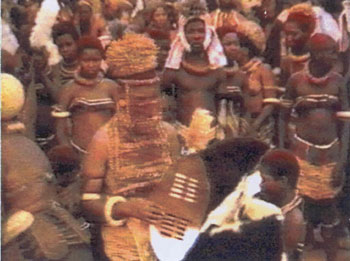
The obverse and reverse side of the toy-shield of the third bride-to be of Shaka's father for the dance after the wedding.
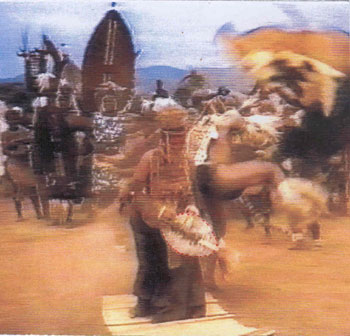
The King dances next to her and the queen is holding the shield meaning that she is a virgin.
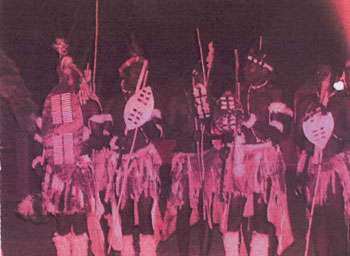
Dancing today for the tourists.
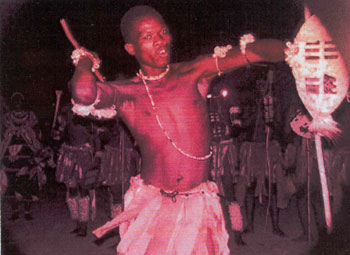
The Pyrhic Dance of the Festival of Panathenaea.
The Gigantomachia is a very important battle when the Gods defeated the Giants (the Elements of nature) and put order on Earth for the first time. It presupposes the creation and existence of Gods and it has been called the victory of the Spirit over the brutal forces of Nature. The Goddess Athena was the only woman that took part in the Gigantomachia and fought the Giants by her father's side. Her peplos (a piece, apparently , of silk cloth) woven by the young Kore of Athens, which was brought in procession to her wooden statue during the Panathenaea, was embroidered with the Gigantomachia. After the victory the Gods danced the Pyrhic dance to celebrate. The name is associated in Greek with fire which was probably burning day and night inside the Temple and which was used for the barbecue of the animal sacrifice (usually a bull). According to one version the Goddess invented this dance and she was the first one to perform it. It seems this is the origin of dance in general which started as a war dance to celebrate a victory. The movement of the dancers was fast and spasmodic to avoid the enemy arrows. They were separated into two groups of defenders and attackers. It was part of the war education of the Youths and in Sparta it was danced by naked boys holding only a shield .
In the hall of the Acropolis Museum there are two blocks with decoration in relief from the pedestal of the choragic monument of Atarvos of the 4th c. BC , the one with two groups of four young naked dancers each (all of them are moving to the right). There were probably more groups performing in front of the spectators during the festival of Panathenaea but this group was best. They are holding oval shields and it is the only example of shields in that shape. They were probably made of wood not to be heavy and in reduced size so they did not come in between their feet when dancing. Such war dances (nakedness, shield) is also known from the Balkans, the Far East, north America and Africa.
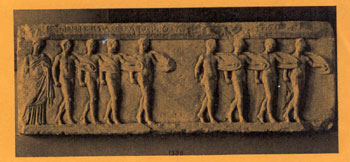
One of two blocks from the pedestal of the monument of the sponsor of the Pyrhic dance Atarvos in the Acropolis Museum. On top there are holes for the feet of bronze statues to be fixed.Was one of them the statue of the sponsor ? The participants of the dance (in groups of four) were young heros who had distinguished themselves in battle or in hunting wild animals and bulls. They hold mini oval shields a little above their waist.
Was it the Pyrhic dance a dance of freedom and liberation? After Moses and the children of Israel went out of Egypt on dry land in the midst of the Red sea then ".. .Myriam the prophetess, the sister of Aaron, took a timbrel in her hand, and all the women went out after her with timbrels and with dances" (Exodus, ch. 15, 20).
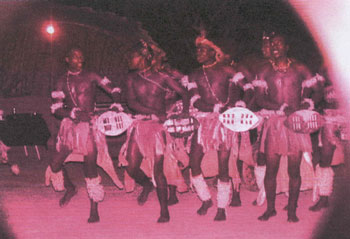
Zulu dancers performing, today, for the Tourists. They hold their mini (half in size and weight) shields horizontally at the height of the waist. It is customary that only unmarried girls and young men dance alternating in separate groups. Photo Internet.
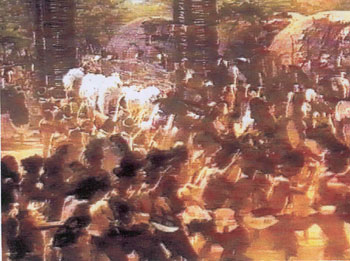
The war dance of the Zulus in two antithetic groups (the one walking to the right and the other one to the left) was performed in very quick and spasmodic movement, apparently, not to give easy target to the enemy. From the movie "Shaka Zulu".
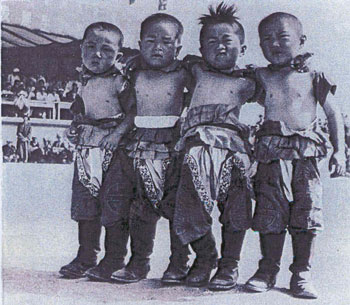
Inner Mongolia. Young wrestlers. Is their number (four) accidental? they are half naked.
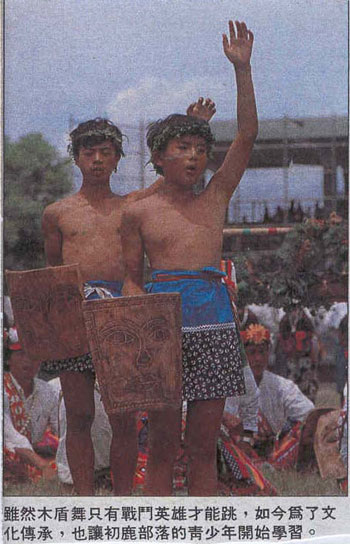
Taiwan. "Mu dun wu", dance with wooden shield. "The sidung dance was, originally, performed only by heroes but, today, it has begun to be studied by youngsters of the Murivunvak tribe for the sake of continuing tradition SINORAMA, September 1992. Children half naked with wreaths.
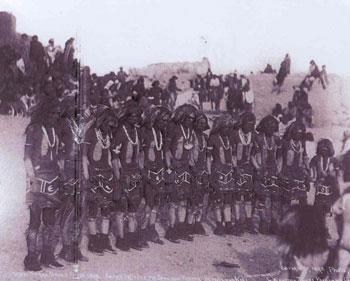
Hopi American Indians ready to dance "the snake dance".
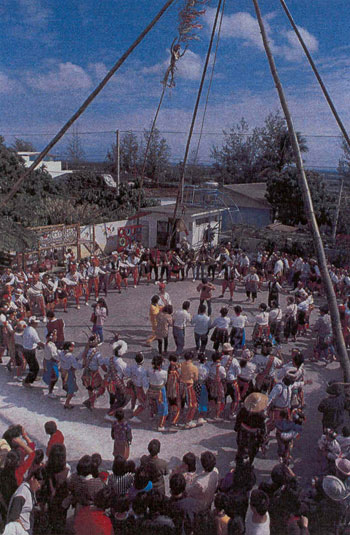
Snake dance to welcome the New Year. Chienbo Village (Puyuma), Taiwan. Photo SINORAMA, March 1996. In the beginning of the circle the dancers walk from left to right but then as the circle closes they seem to move the opposite direction (from right to left) like the two groups of the Zulu dancers.